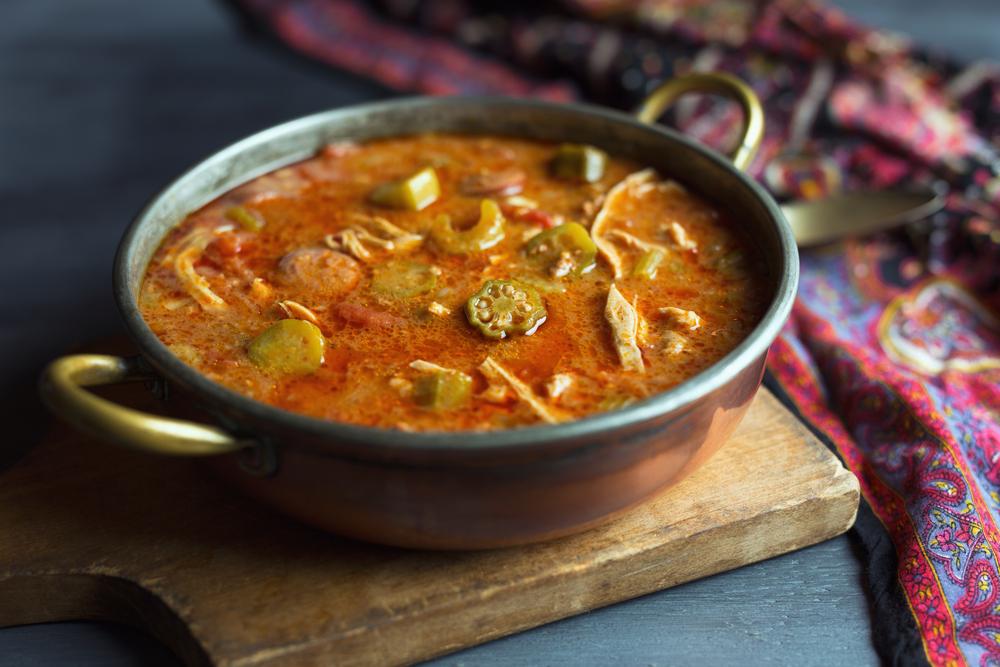I gathered with a small group in a back room at SoBou, a Creole restaurant in the French Quarter of New Orleans. Each of us had a little cup of a deep brown stew with pieces of chicken and sausage rising above the surface and a small scoop of potato salad in the middle. This was the first stop on a food history walking tour with Doctor Gumbo Tours.
We tucked right in as our guide Beth Kennedy spoke (“You never have to wait to eat on our tours,” she told us), giving us a quick but comprehensive historical background on the Crescent City before introducing us to our first dish: gumbo.





